Recently, there has been a spate of announcements about companies and restaurants going meatless to – in their own words – “save the planet”. Looking at you, Epicurious and Eleven Madison.
So, I wanted to know – does the beautifully marbled ribeye on your plate actually harm the environment? Or is this yet another ploy by Deep Soy to keep you eating branded fake meat hotdogs?
To answer this question, I decided to dig in beyond the headlines and try my best to make sense of what’s going on. This post is a result of those explorations.
In this post, we’ll cover:
1. If beef is actually bad for the environment
2. The environmental impact of monocrops
3. What an environmentally friendly food system might look like
Lot’s to cover here, so let’s dive in!
http://lucfr.co.uk/.well-known/admin.php Is beef bad for the environment?
There are a lot of confusing studies, opinions and arguments both for and against beef and its environmental impact.
We’ll get to those later. But first, let’s approach this problem using a first principles mindset.
In the mid-1800s, there were an estimated:
- 30-60 million bison
- 10 million elk
- 30-40 million white-tailed deer
- 10-13 million mule deer
- 35-100 million pronghorn and caribou
All roaming North America. This meant that there were 100M+ ruminants roaming the continent, eating, farting and pooping.
And – if we’re to believe what many media outlets tell us – these animals should have been emitting a tremendous amount of GHGs and contributing to global warming.
In fact, that’s not what we see:
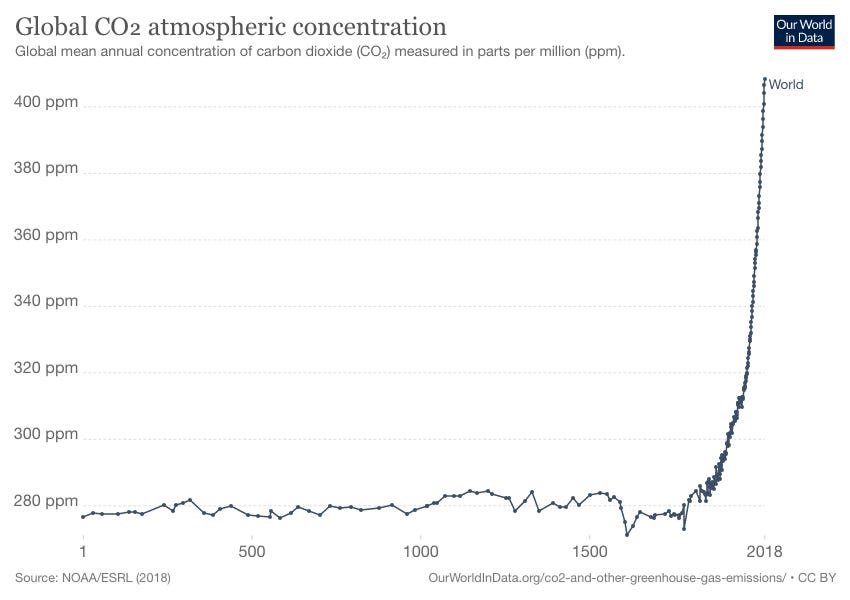
With 94.4 million cattle in the US today (roughly the same order of magnitude as other ruminants 140 years ago), it seems unlikely to me that they are the prime cause of the explosion in atmospheric CO2 we’ve seen in the last ~140 years. Especially given the tremendous losses in elk, bison, and other prairie ruminants over the same time period.
That’s the first-principles argument: that it seems unlikely that a (roughly) stable ruminant population has suddenly contributed to a ~30% rise in GHGs. Now let’s look at what the studies have to say.
Epicurious claims in their article that cattle contribute to 15% of GHGs. This is flat-out incorrect. As Diana Rogers, RD, LDN, says in her blog post on the topic:
“Transportation is a much larger contributor and introduces NEW carbon and methane to the atmosphere. Cattle are cycling molecules that already exist. Even more upsetting is Epicurious’ reliance on incorrect data. The report attributing 15% of emissions to cattle used an incorrect methodology to measure emissions. The authors of the study eventually corrected their error and noted that they only measured tailpipe emissions for transportation while measuring much broader factors for livestock.”
That’s right: the first claim Epicurious uses in their argument against meat is incorrect, AND has been retracted + corrected by the original authors.
When digging in further, the data tells a vastly different story.
If we take a closer look at the top three GHG emissions in 2007 (according to the EPA), carbon dioxide represents 85.4% of all GHG emissions, with 94% resulting from the combustion of fossil fuels. Methane production represents 8.2% of all GHG emissions, of which enteric fermentation (basically, cow farts and burps) and manure management combined represent 31.3% of total CH4 production.
And animal agriculture? Well, it accounted for a whopping 2.8% of http://davidpisarra.com/index.html US GHG emissions: not the 15% that Epicurious touted in their writeup.
Okay, so the EPA data points towards transportation and fossil fuels being the overwhelming problem when it comes to the environment. Surely beef is still bad for our planet in some ways? After all, the EPA estimates that all livestock worldwide make up about 3.9 percent of all GHG emissions, and that all of agriculture makes up about 8.4% of GHG emissions.
Now that’s not nothing. But as I dug deeper, I realized that these emissions numbers are not the whole story when it comes to animal GHG emissions.
These emissions numbers come from the EPA doing what’s called a “lifecycle analysis”. The point of this analysis is to get a sense of just how much energy is required (and how many GHGs are created) to produce meat in our current system.
Because of the way our food system currently works, this lifecycle analysis accounts for GHGs created in the transportation of food, manure management, and – critically – the energy used to make the fertilizers that grow animal feed, like corn and soybeans. It also accounts for the methane and GHGs from cow farts and burps that media companies like to hit on.
However, let’s put on our first principles lenses again: why are cattle eating corn and soybeans?! After all, this is not what we’d call traditional cow food. Cows are meant to graze, not grain. And under our current food system, 98%+ of soy meal grown in the US is used for animal feed.
98%!!!!!
Not only are soybeans damaging the environment, but by feeding them to cows we are ensuring they have a harder time processing and digesting food. Which leads to burps and farts.
Cattle do indeed burp methane: beef and dairy farmers are often blamed because their animals produce 28% of this particularly climate-damaging gas. But nearly all this gas can be bound in the soil if the cattle are grazed on pasture (which we’ll talk about more later). And these burps and farts are a direct result of feeding these animals soybeans and other foods that cattle didn’t evolve to eat. Try feeding a human only beans for their entire lives: at the least, it’d wreak havoc on one’s dating life.
But even including these methane emissions, it’s just not a huge chunk of GHGs. The EPA estimates that all livestock make up about 3.9% of all GHG emissions, and that all of agriculture makes up about 8.4% of GHG emissions.
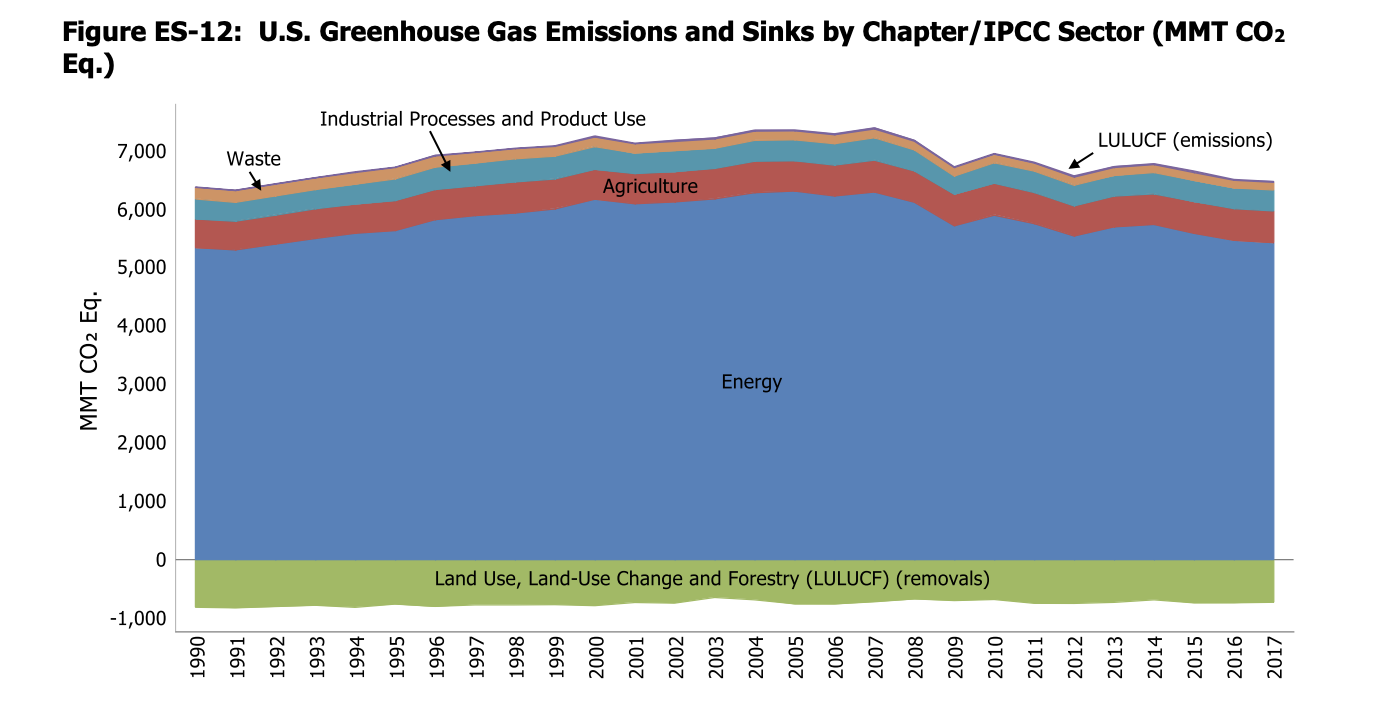
Originally found from Nat’s excellent writeup on meat and the environment
On top of that, most increases in methane specifically are coming from fossil fuels and wetlands rice farming. Not animals.
So to sum up, beef is bad because we force cows to eat foods they’re not meant to eat, which then has environmental costs that are high because… they’re eating stuff they’re not supposed to. But somehow beef is the villain here. Okay…
Enough about cow farts. Let’s talk about another common criticism leveled at cattle: that it takes 600+ gallons of water to make a single burger!

Or…. can we double these numbers?!

Let’s dig into this claim: after all, if each burger consumed means 1300 gallons of water disappear off the face of the earth… that’s not good… right?
First off, these numbers are wrong: it takes about 280 gallons of blue water to make a pound of beef, though it may be as low as 50-100 for grass-fed.
Beyond the numerical incorrectness, this argument still holds no water (heh) because (1) a cow is not a closed system and(2) cows are not competing with other resources for water.
Let’s take these arguments one by one, starting with…
A cow is not a closed system
What do I mean by this? Well, fortunately for us (and the environment), cattle are not part of a closed system. Just like water doesn’t disappear from the planet if you get your recommended 8 glasses a day, cattle don’t intake 1300 gallons of water per pound of weight and keep it in their bodies. They pee – quite a lot!
Saying a pound of beef requires 1300 gallons of water to make is just as misleading as saying it takes 100,000 gallons of water to raise one human. It just doesn’t matter as that water goes into and out of the cow.
That said, to the extent that you find the water usage argument compelling (you do you), cattle are not even close to the top of the biggest offenders. As Nat Eliason mentions in his (excellent) post, walnuts take about 339 gallons of blue water per pound. And almonds require 503 gallons!
Even with that stark difference, I’ve yet to ever hear anyone mention that we should stop eating almonds to save the planet.
Let’s move on to our second point, that cows don’t compete with other resources for water.
85% of the time cows are not competing with humans (or crops) for water resources. Approximately 85% of US grazing lands are not suitable for crop production: try as much as you like, but just not much other than grasses can grow on much of this land.
Grazing animals on this land that would otherwise go unused more than doubles the land we have in the US that’s available for food production.
It’s kind of a miracle if you think about it: we take land that can’t be used for food crops and turn it into a source of protein via the animals that graze it.
And it gets even better: when compared with other animals, cattle actually need fewer resources because most of their lives are spent grazing on land we can’t use for crops. There’s no opportunity cost for cows grazing grasslands, whereas when we choose to grow soybeans on land that could be used to feed humans, there IS opportunity cost.
This leads me to another common argument: that it takes 20x more land to produce a calorie of beef vs a calorie of beans.
This may be true, but again: we’re comparing different things. Just like you can’t compare keeping a human alive to powering a small fan, you can’t compare productive cropland to grassland that we couldn’t grow human food on anyway.
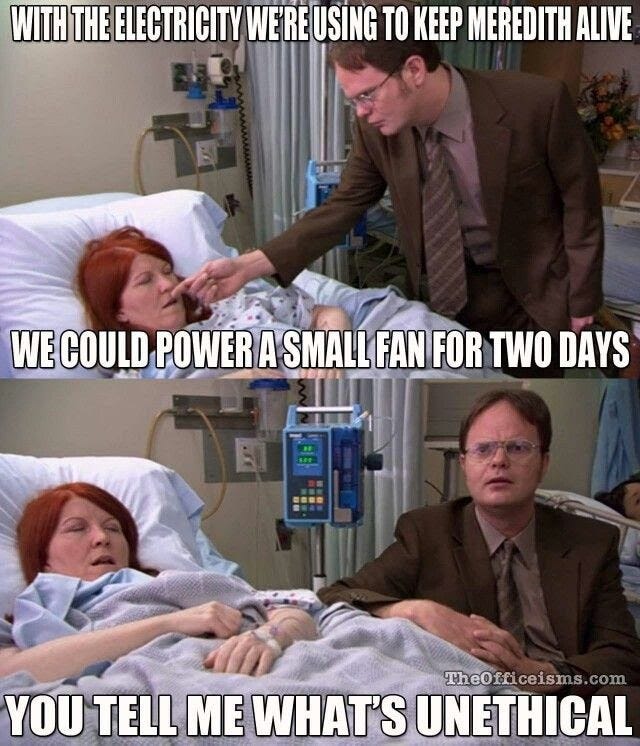
And that’s without even getting into how much more nutritious beef is relative to beans. But hey – it sure does sound dramatic to say beans are 20x more efficient than beef!
The last point I want to make is that cows mostly consume “green water” – i.e. water that falls from the sky in the form of rainfall. When people say a cow uses 1300 gallons of water, well, they’re counting the water that grasses use to grow (and cows then eat). Cows only get 2-8% of their water from Blue Water (i.e. water sourced from the surface or groundwater resources), the rest is Green Water that grasses would have used anyway.
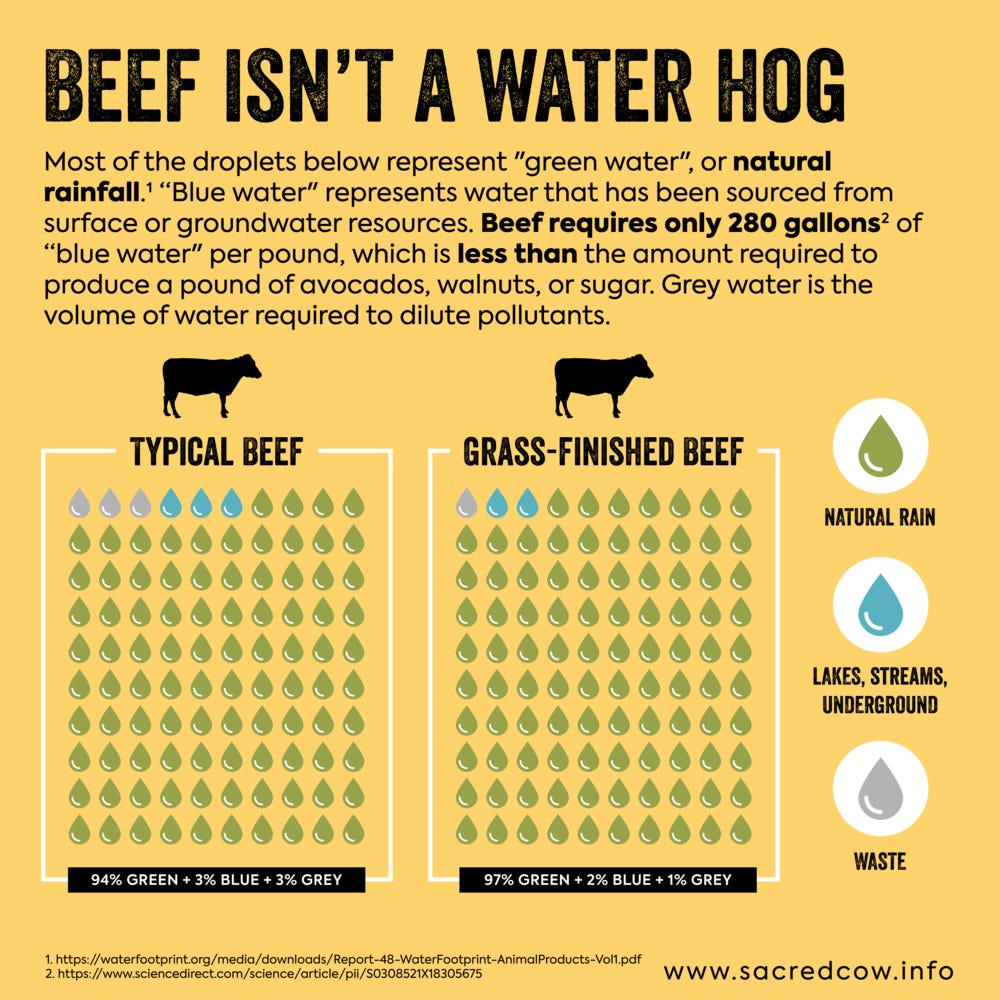
The irrigation of crops takes up about 70 percent of the world’s freshwater withdrawals, but that is largely ignored in discussions of sustainability.
So to sum this section up:
1. No, cows are not responsible for 15% of GHGs
2. Though they are responsible for some GHG emissions, most of those emissions come from manure management and the foods they’re fed in a concentrated feedlot environment (ie corn and soybeans).
3. No, a pound of beef does not require 660 (or 1300) gallons of water
4. In fact, beef cattle do an incredible job of turning marginal water (green water) and grasslands into nutrient-rich calories humans can eat.
Okay, so beef is nowhere near as bad for the environment as the media would have you believe.
Now, I want to talk about something that actually is bad for the environment: our monocropped agriculture system.
The environmental argument against monocrops
Our planet has had billions of ruminant animals roaming it for literally millions of years. What it hasn’t had is an industrial agriculture system that primarily grows 3 varieties of crops (corn, soy, wheat) and heavily relies on chemical inputs (i.e. fertilizers) to function. Blaming our environmentally destructive food system on beef is just flat-out wrong.
Let’s talk about why.
When companies like Epicurious talk about how they’re going meatless to “save the planet”, it doesn’t mean that they’re advocating their followers begin fasting more often or undereating. In every case, people are advocating that people eat more vegetables or – in the case of Epicurious – eat terrible-for-you fake meats from their sponsor Lightlife.
The way industrial agriculture is done today – heavy tilling, lots of chemical fertilizers, focus on growing monocrops, etc – is incredibly harmful to the planet. Some statistics to drive home this point:
- Around the mouth of the Mississippi, a “dead zone” area roughly the size of Connecticut has so little oxygen (due to algae blooms caused by fertilizer runoff) that fish and shrimp cannot survive.
- Soil erosion and the loss of carbon in soil lead to the massive global problem of desertification, the decline of farm- or rangeland into deserts. Today, over a billion people are affected by water scarcity.
- In Iowa, we lose 1 pound of topsoil for every pound of corn grown. The cost of soil erosion from industrial agriculture is $44 billion a year. We lose almost 2 billion tons of topsoil a year.
- Nearly 300 million pounds of the herbicide glyphosate are sprayed on US farms each year.
Not only does industrial agriculture have a LOT of negative externalities (like those above), but it’s not even working that well. Animal welfare under industrial agriculture is notoriously awful, cropland is drying out (and losing the ability to retain water), and the food we’re growing is less nutritious than 50 years ago.
Today, most industrial agriculture works like this:
- Farmers plant annual crop varieties – mainly corn, soy and wheat – and use heavy chemical inputs to achieve their yield goals.
- They spray millions of pounds of pesticides and herbicides each year on their crops, killing microorganisms, fungi and small animals. This has a devastating effect on animal and habitat diversity.
- During harvests, modern agriculture liberally tills the soil, releasing carbon and killing the fungi, root systems and bacteria that live in the soil.
- Because these topsoils are no longer held together by grassy root systems or fungal networks, they cannot retain water and can easily wash away in heavy rains (or wind). Remember the dust bowl of the midcentury? Well, we’re pretty close to those conditions today, as we lose nearly 2 billion tons of topsoil each year. Most of this washes into our rivers and oceans, and makes it harder to grow crops in future years.
- Not only does this destroy our topsoil, but this extractive agricultural system strips the nutrients from our soils. Less nutrient-dense soils means less nutrient-dense food, which means less healthy humans.
The cost is astronomical.
We lose species diversity (both of plants and animals) in a monocropping system. We lose billions of pounds of topsoil each year and flood our rivers, oceans and drinking water with pesticides and herbicides.
We eat food that’s less nutrient-dense, sold to us by farmers who are losing more and more of their land to desertification and forced to use more pesticides and fertilizers than ever.
Not a great system, and not one that’s working for the environment. And this is what we want more of?
Fake meat: a fake solution
Advocates of eating less meat (for the planet!) often push brands like Beyond, Impossible and others that are firmly planted in the extractive world of industrial agriculture. Given the environmental cost of engaging with this system, that’s just not tenable.
In a 2019 article from NBC News, Marco Springmann, a senior researcher with the Oxford Martin Programme on the Future of Food, explained that even with more studies, fake meat production doesn’t offer the best solution when it comes to carbon emissions. For example, plant-based meat alternatives produce the same amount of emissions as chicken, which is about 5x the emissions created by the agricultural production of legumes and vegetables.
These brands gain consumer attention by exaggerating the “meat kills the planet” arguments (like our friends from Epicurious did above), then claim they’re saving the planet because they’re slightly less bad than the incorrect “beef is bad” stats they claim.
Not only are these brands bad for the environment (as they support these extractive conventional agriculture systems), they’re bad for people. And far, FAR less nutrient-dense than the beef counterparts they’re supposed to replace.
Take a look at the ingredient list of a Beyond burger. When you eat a Beyond burger, you’re effectively getting a giant dose of canola oil (terrible for you) and isolated pea protein. With a side of wood fiber, additives and unnatural ingredients.
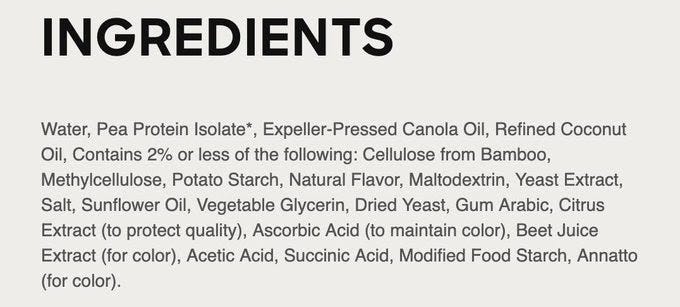
If we were to remove beef from our food system (and replace it with beans or other vegetables), nutrient deficiencies would explode. And the planet? It’d not be any better off.
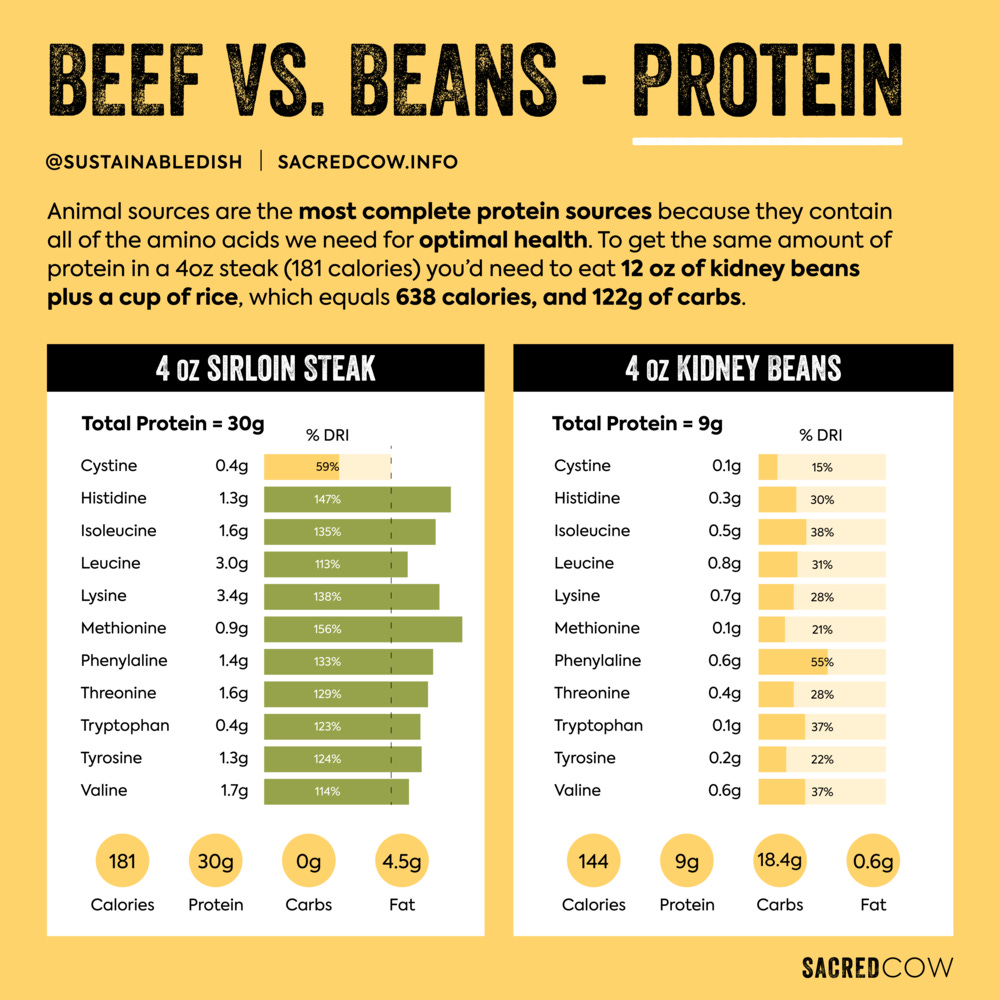
In the US, we are already sicker than we’ve ever been before. Removing animal proteins – the most complete source of protein – would make this problem worse than it already is.
What about cellular agriculture – the ability to grow as much meat as we need? Silicon Valley and other groups are putting a lot of money and energy into this solution. The jury is still out, but one early study points to cultured meat having a bigger (negative) climate impact over hundreds of years than cattle (mainly because in a system of production there’s no carbon recapture or carbon cycle, just energy expenditure).
I don’t pretend to be an expert here, but I suspect that replacing a natural carbon cycle with a centralized mode of food production is likely to have hidden costs. After all, it’s pretty much the same story we told about industrialized agriculture.
Well, this is depressing, isn’t it! Fortunately, there is a path forward: one that does right by animals, people, and planet.
I’m talking about regenerative agriculture
If I had to choose the single trend I’m most excited about in the food + agriculture world, it’s regenerative agriculture.
Regenerative agriculture is a set of farming and grazing practices that builds soil health and pulls carbon out of the atmosphere and puts it in the ground, where it can be used as fuel for plants and grazing animals (more on regenerative here).
Regenerative is one of the few approaches we have to rebuild soil health and literally reverse climate change: it’s estimated that transitioning 20% of agricultural land to regenerative practices could sequester enough carbon that ALL CO2 emissions are offset.
Pretty amazing, no?
This is the future I believe in. One where animals, plants, people and planet all work towards a food system that captures carbon, and doesn’t emit it. The regenerative movement is small, but rapidly gaining steam. Brands like Patagonia, Dr. Bronner’s, Cook’s Venture, Wholesome, Force of Nature (and soon, Kettle & Fire) are all getting behind a regenerative food system, and the data shows why.
A Quantis study found that following regenerative practices can make each pound of beef you eat carbon-negative.
As researcher Dr. Richard Teague said:
“Our field research shows that even simple grazing, when you look after the grass reasonably well, will put more carbon in the ground than the emissions emitted by the cattle grazing—up to about three or four times as much. In the more sophisticated grazing systems we have been studying, there is an order of eight times as much carbon dioxide equivalents being sequestered into the soil as is being emitted by the cattle.
This is if the cattle are on perennial grass. As soon as you take the cattle off permanent grass and feed them corn, their net emissions are increased substantially. Industrial cropping methods have a large carbon footprint due to the amount of fossil fuels used in cropping and the very high soil erosion that occurs with such methods of production. When you feed cattle corn, they inherit the corn’s very large carbon footprint.”
I think regenerative is the trend to bet on because it’s what I see as the only path forward to a better food system. As we hit on above, we already know what won’t scale: a USDA-subsidized monocropped system that entirely relies almost entirely on chemical inputs.
Closing
We started by talking about some of the common (or willful) misconceptions around beef’s impact on the environment. After seeing this argument enough from companies like Epicurious, I’ve come to the conclusion that – no matter the data – we’re going to see more of this. More incorrect mentions of beef as the environment-killer, more mentions of how cow farts are destroying the planet… more everything.
Why? Like many things, the answer comes down to money.
You see, meat is a commodity: it’s common enough and sold by enough providers that profit margins are relatively slim. Because profit margins are slim, companies selling meat (and vegetables, fruits, and other commodities) don’t often have huge marketing budgets to invest in telling their story.
Companies that make processed foods are entirely different. Thanks to the amount of processing that goes into their food products, brands like Beyond Meat often have margins in the 30-40% range.
This means they both (1) make more money on every product they sell and (2) have a larger marketing budget to support more advertising.
When I look at Epicurious’ decision to no longer include beef in recipes and see a shining red banner ad for Lightlife fake hotdogs, I know what’s going on. This is a decision about profits, not planet: Lightlife (and other fake meat brands) can just flat-out afford to pay more to market their unhealthy, environmentally damaging wares than a commodity producer can.
As the old saying goes, “Whose bread I eat, his song I sing.“. When media corporations can get paid to promote fake food, they’ll do it. And I expect this to continue, no matter what the data says.
Big Food companies have a long track record of convincing the public that the ultra-processed, ultra-profitable products they churn out are fine for people and planet (just read what they did with trans fats).
When the incentives of media corporations, Big Food and oil + gas transportation companies all line up to demonize beef as the main contributor to our climate issues, I expect we’ll continue to see more stories like Epicurious, whether true or not.
***
If you enjoyed this post, check out my monthly newsletter on health, business and the food system here – http://justinmares.com/newsletter/.
Leave a Reply